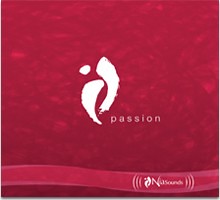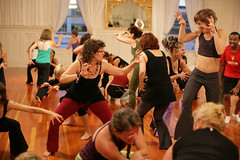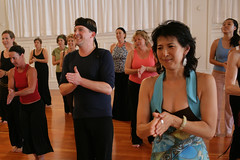For the last two weeks, we have been engaged in “Passion: The Practice of Form and Freedom.”

During week one — The Practice of Freedom — we have danced to the music of the Nia routine Passion, using Nia’s eight stages of FreeDance.
During week two — The Practice of Form , starting on Thursday, February 4 — we dance the original choreography of Passion that Nia co-founders Debbie Rosas and Carlos AyaRosas created to the same music.
(You can listen to the music of Passion free at http://nianow.com/niasounds/passion-cd )
The intent of “Passion: The Practice of Form and Freedom” is to first experience the freedom of your own body’s way, moment by moment, in relationship to the music, the self and the mystery. And then, after that, to experience your body’s relationship with the form of choreography.
Form and freedom are like yin and yang, like inhale and exhale, like sound and silence. Each gives birth to the other. Each depends on the other to reveal its true nature. Each contains the seed of the other in its belly.
I can bring a full experience of the sensation of freedom right into any form. I can discover that freedom itself actually has an anatomy.

FREEDOM
FreeDance is Nia White Belt Principle #4. FreeDance is how Nia teachers organically create and learn Nia routines.
The practice of FreeDance is a foundation for sensory awareness and creativity. Through its eight stages, FreeDance offers a way to get out of the mind and drop into sensation — the sensation of the physical body, the sensation of the music, the sensation of the emotional body and the sensation of intuition.
FreeDance offers the physical body “an alchemical process to physically respond to change moment by moment.” FreeDance offers the mind, “a way into the creative void of conciousness.” FreeDance offers the emotional body a way to express all feelings freely. FreeDance offers the spirit play, and a journey to “the playground of all playgrounds — the unexplored moment.”*
FORM
When they were on the path of creating Nia, Debbie and Carlos studied various movement forms, nine of which become the elements of Nia. They did this in order to “balance the feminine with the masculine, the precise with liquid fluidity and the powerful with the yielding.”

Debbie and Carlos took the freedom inherent in their two bodies, minds, hearts and spirits and essentially FreeDanced the nine movement forms into something new, what we know now as Nia.
Each of the nine movement forms has a unique sensation and energy signature: From the healing arts, Alexander Technique, the Feldenkrais Method and Yoga; From dance arts, modern dance, jazz dance and Duncan dance; and from Martial arts, Tai Chi, Aikido, and Taekwondo.
Each form stimulates different breathing responses, different emotional responses. They cross train body, mind emotions and spirit . They offer a way to speak many languages.
Look how each person in these photographs is doing the choreography differently.

Each person brings to the form of the movement their own uniqueness — physically, mentally, emotionally and spiritually. A different angle of the hand, a different feeling in the face, a different gaze of the eyes, a different intent. Each person finds their own unique freedom of expression within the form.
Form is the vessel of freedom. Freedom is the vitality of form.
This is Nia’s practice of form and freedom: Bring the freedom of your uniqueness and the form of your body into the temple of the moment where the mudras created are both traditional and never-before-seen.
Nia, like life, is the practice of form and freedom.
FORM & FREEDOM: A CONVERSATION
If you have been to any of the “Passion: The Practice of Form and Freedom” classes, please comment below. I would love to hear from you about your experience FreeDancing, doing the choreography of Passion or both.
What did you discover? What did you feel? What did you sense?
*All quotes from the Nia White Belt Manual, 2001, by Debbie Rosas and Carlos AyaRosas.



3 responses so far ↓
1 Jill Campana // Feb 3, 2010 at 6:20 am
Really enjoyed reading your blog entry Rachael (as usual).
Freedom and Form falls so nicely into the arms of Natural Time and 9 Movement Forms, which is my focus for this month. I had actually not given that much thought, but after reading your blog, I’m excited about using Freedom and Form as a sub-focus — SOON!!!
Love,
Jill
2 Sharry // Mar 15, 2010 at 11:31 am
Love your new blog heading and title.
Leave a Comment